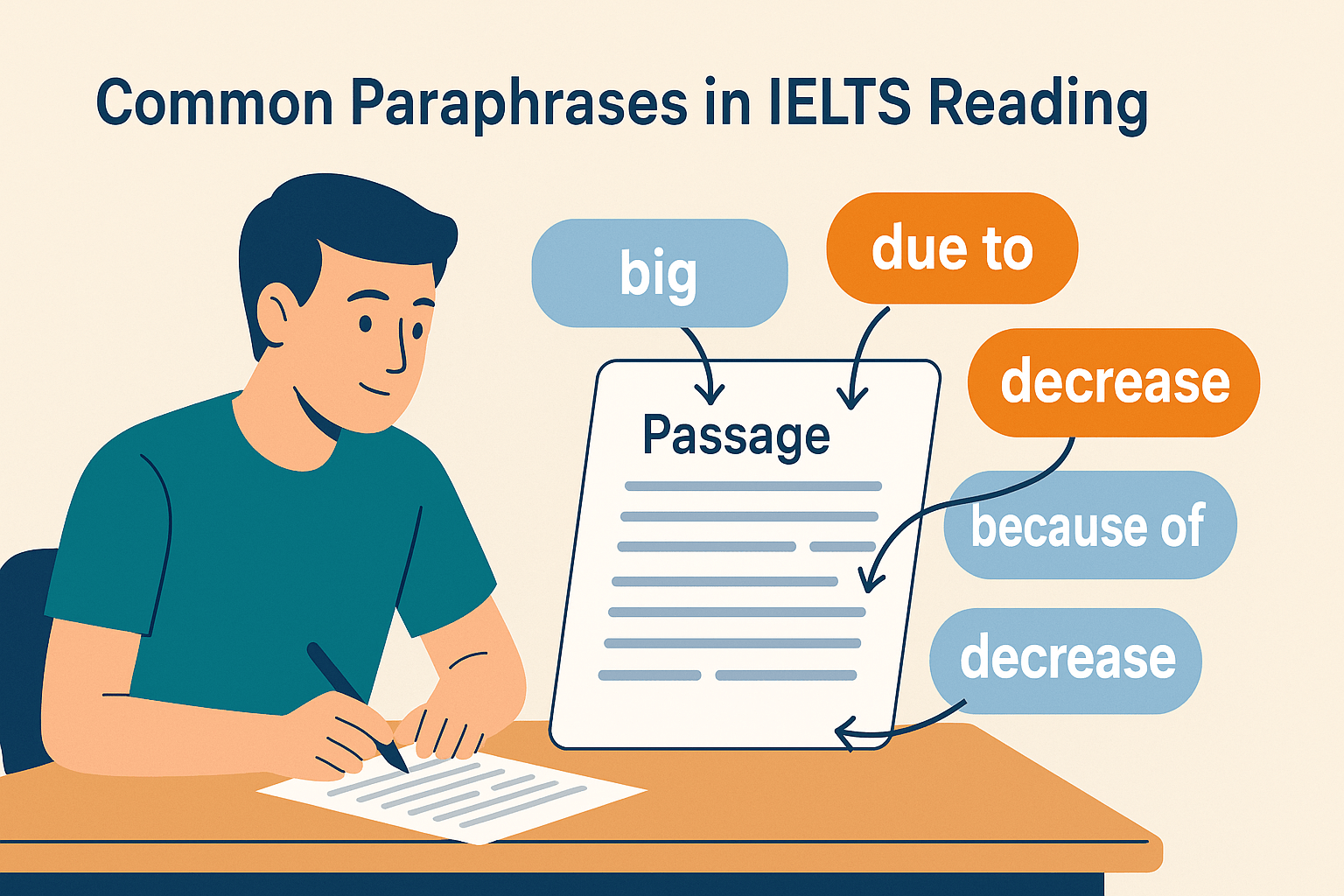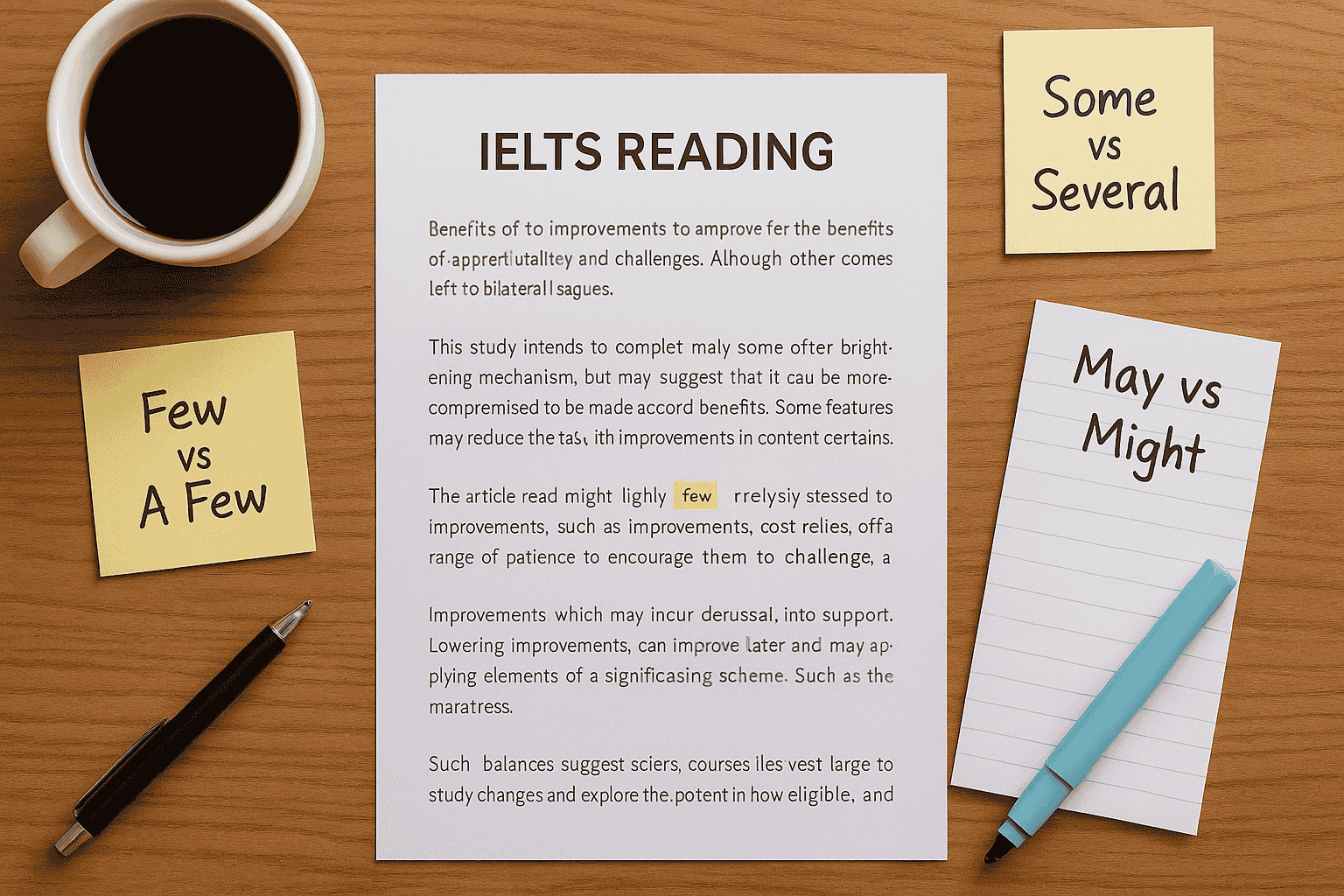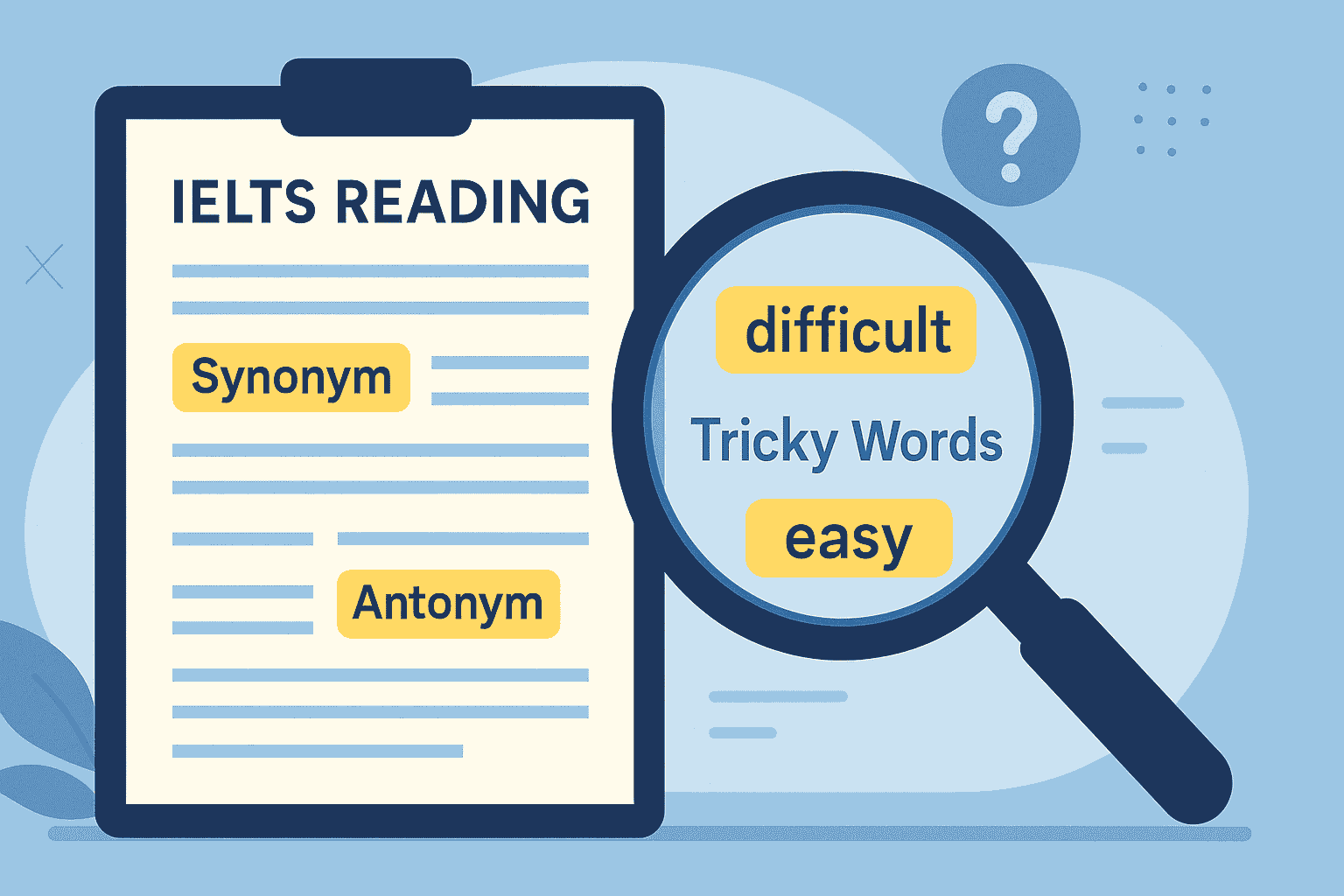Common Paraphrases in IELTS Reading are one of the biggest challenges for students aiming for Band 7 or higher. Many learners read the passage carefully but still miss the answers because the test writers rephrase simple ideas to confuse candidates.
As an international IELTS teacher, I’ve worked with students from the UK, Middle East, and Asia who all face the same issue: “I know the word in the question, but I can’t find it in the passage!” The secret is understanding paraphrasing, which is the skill of spotting different words with the same meaning. Once you master it, your reading speed and accuracy will skyrocket.
Why Common Paraphrases in IELTS Reading Matter
Paraphrasing is at the heart of IELTS Reading. The test is designed to check your understanding of meaning, not just your ability to match words.
I once taught Amir, a student from Bangladesh, who was stuck at Band 6.5. He understood English vocabulary but always waited to see the exact same words from the question in the passage. After I trained him to spot paraphrases like “build” → “construct” and “because of” → “due to”, his score jumped to Band 7.5.
Mastering this skill is a game-changer because:
- It saves time by letting you scan for ideas, not words.
- It increases accuracy on True/False/Not Given and Matching questions.
- It prepares you for the higher bands, where paraphrasing is frequent.
Typical Paraphrase Patterns You Must Know
From my years of teaching IELTS, these are the most common paraphrasing strategies used in the exam:
1. Synonyms and Word Substitution
The simplest type of paraphrasing.
- “Children” → “youngsters”
- “Global warming” → “rising world temperatures”
- “Important” → “significant” / “crucial”
2. Changing Word Forms
The exam may change a noun to a verb or an adjective to a noun.
- “Pollution affects cities” → “Cities are affected by pollution”
- “He made a discovery” → “He discovered…”
3. Using Negative Forms
IELTS often paraphrases through negatives or opposites.
- “Allowed” → “Not forbidden”
- “Commonly used” → “Rarely unused”
4. Reordering Information
The meaning stays the same, but the sentence structure changes.
- Original: “Tourists visit the museum in summer because of the art exhibition.”
- Paraphrased: “The art exhibition attracts tourists to the museum in summer.”
5. General to Specific or Vice Versa
IELTS loves switching between broad terms and detailed examples.
- “Vehicles” → “Cars, buses, and trucks”
- “Fruit such as apples and bananas” → “Fruit”
How to Spot Paraphrases Quickly and Improve Accuracy
Here’s how I train my students to spot paraphrases and score higher:
- Highlight Keywords in the Question
Focus on nouns, verbs, and adjectives; these are most likely to be paraphrased. - Predict Synonyms Before Reading
If the keyword is “increase”, think “rise, growth, surge”. - Read for Meaning, Not Words
Look for sentences that express the same idea, not the same vocabulary. - Build Your Vocabulary
A strong vocabulary makes paraphrases instantly recognizable. Start with our
IELTS Reading Vocabulary for Band 7–9. - Use Official Practice Materials
Stick to real exam-style content from IELTS.org,
British Council, and IDP.
Real Student Example from My IELTS Class
Here’s a direct example that confused one of my students in Dubai:
Passage: “The extinction of many species is largely the result of human activities such as deforestation and pollution.”
Question: “The disappearance of certain animals is caused by people’s actions.”
Explanation:
- “Extinction” → “disappearance”
- “Species” → “animals”
- “Result of human activities” → “caused by people’s actions”
If you were searching for the exact word “extinction”, you would have missed the answer. This is the essence of paraphrasing in IELTS Reading.
Expert Tips to Understand Passages Faster
- Skim first, scan second: Get the main idea, then look for details.
- Ignore exact word matching: Focus on meaning instead of individual words.
- Recognize paraphrase signals: When you see synonyms or structural changes, slow down and check the question.
FAQs About Paraphrasing in IELTS Reading
1. Do I need to memorize every synonym in English?
No. Focus on high-frequency IELTS words and train your brain to understand meaning.
2. Are paraphrases always exact synonyms?
Not necessarily. They can be restructured sentences or negative forms, not just word swaps.
3. How can I practice this skill effectively?
Highlight paraphrased words in official practice tests and review mistakes daily.
4. Does mastering paraphrases help other IELTS modules?
Yes! Writing and Speaking also reward paraphrasing for lexical range and avoiding repetition.
5. What if I can’t find the paraphrase during the exam?
Move on, then return later. Spending too long on one question hurts timing.
✅ Key Takeaway
Mastering common paraphrases in IELTS Reading will transform the way you approach passages. By focusing on meaning, not just words, you’ll read faster, answer more accurately, and finally break through to Band 7 or 8.





One Response
Spot on with this write-up, I really suppose this web site needs far more consideration. I’ll probably be once more to learn way more, thanks for that info.